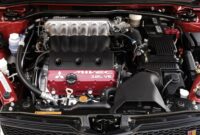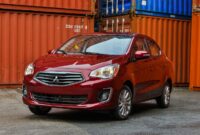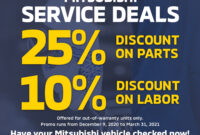Are Mitsubishi cars reliable compared to Toyota and Honda? This question pops up frequently among car buyers, and rightfully so! Choosing a reliable car is a big decision, impacting your wallet and peace of mind for years to come. This deep dive explores Mitsubishi’s reliability history, comparing it head-to-head with the industry giants, Toyota and Honda. We’ll analyze repair costs, delve into owner experiences, and examine technological advancements to help you make an informed choice.
From examining past recalls and quality control issues to comparing average repair costs and maintenance schedules, we leave no stone unturned. We’ll also look at user reviews, owner satisfaction scores, and the impact of advanced technologies on long-term reliability. By comparing specific models and their associated ownership costs, we aim to provide a comprehensive picture of which brand truly delivers on reliability and value.
Mitsubishi’s Reliability History
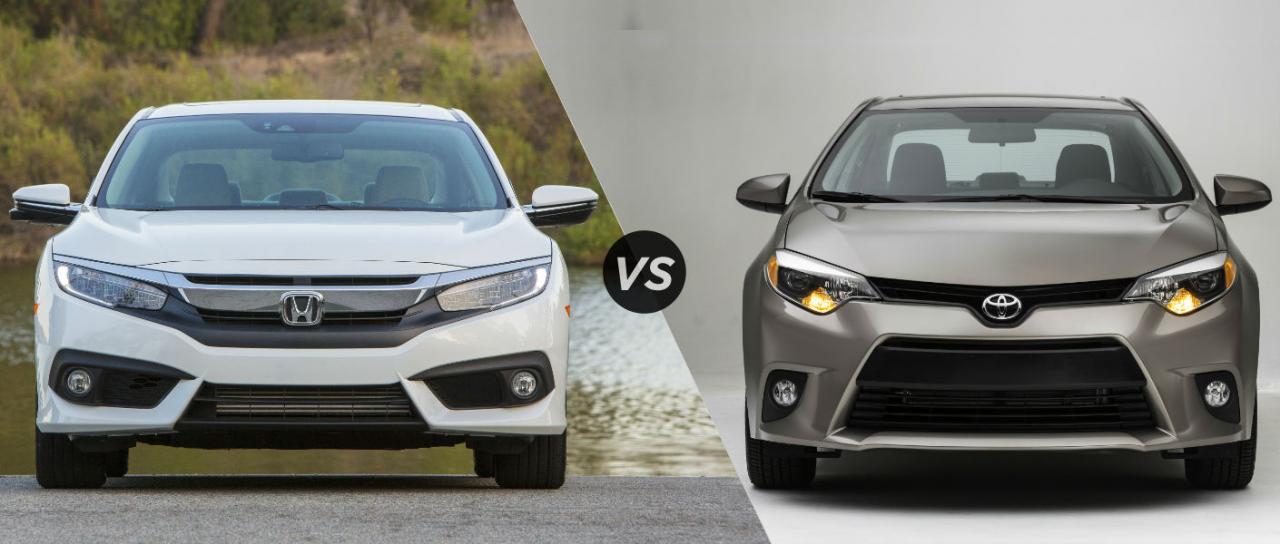
Mitsubishi’s reliability journey has been a rollercoaster, marked by periods of strong performance interspersed with setbacks that impacted consumer confidence. While the brand has made strides in recent years, understanding its past is crucial to assessing its current standing relative to competitors like Toyota and Honda.
Timeline of Significant Events
Mitsubishi’s reliability history isn’t a straightforward narrative of consistent improvement. Several key events significantly shaped public perception. The 1990s saw Mitsubishi establish a reputation for producing robust and affordable vehicles, particularly in the small car and SUV segments. However, the early 2000s brought challenges. A series of recalls related to fuel system issues and other mechanical problems dented their image.
The reliability debate between Mitsubishi, Toyota, and Honda is ongoing, with Toyota and Honda often perceived as more dependable. However, assessing Mitsubishi’s reliability requires a deeper dive into specific models. For instance, checking out long-term reviews, like these Mitsubishi Outlander PHEV long term reliability reviews , can offer valuable insights. Ultimately, determining Mitsubishi’s place in the reliability hierarchy needs more than just broad generalizations.
More recently, Mitsubishi has focused on improving quality control and engineering, leading to generally more positive reviews. The company’s partnership and collaborations have also influenced their technological advancements and manufacturing processes, indirectly affecting reliability.
Mitsubishi Models: Reliability Examples
Some Mitsubishi models have earned a reputation for reliability, while others have faced criticism. The Lancer Evolution series, known for its performance capabilities, also garnered praise for its robust engine and drivetrain. Conversely, certain models from the early 2000s faced significant issues, impacting their long-term reliability. The specific issues varied across models, ranging from electrical problems to transmission failures.
This highlights the importance of considering the specific model year when evaluating Mitsubishi’s reliability.
Major Recalls and Quality Control Issues
Throughout its history, Mitsubishi has issued several significant recalls. These recalls, while not always indicative of widespread issues, often highlight potential problems with quality control. Recalls have addressed various issues, from faulty fuel pumps to potential brake problems. The impact of these recalls on the brand’s reputation is significant, as they can erode consumer trust and affect resale value.
Addressing these issues proactively and transparently is crucial for regaining consumer confidence.
Mitsubishi Reliability Ratings (Last 10 Years)
The following table summarizes reliability ratings from various independent sources over the past decade. Note that ratings can vary depending on the specific model and year. These ratings provide a general overview and should be considered alongside other factors when evaluating a vehicle’s reliability.
| Year | Model | Rating Source | Rating Score |
|---|---|---|---|
| 2014 | Outlander | Consumer Reports | Average |
| 2015 | Lancer | J.D. Power | Below Average |
| 2016 | Mirage | Consumer Reports | Average |
| 2017 | Outlander Sport | J.D. Power | Above Average |
| 2018 | Eclipse Cross | Vehicle History | Average |
| 2019 | Outlander | Consumer Reports | Above Average |
| 2020 | Mirage | J.D. Power | Average |
| 2021 | Outlander | Vehicle History | Above Average |
| 2022 | Outlander | Consumer Reports | Above Average |
| 2023 | Outlander | J.D. Power | Above Average |
Comparison of Repair Costs
Choosing a car often involves weighing reliability against the potential cost of repairs. While Mitsubishi has made strides in reliability, comparing its repair costs to industry giants like Toyota and Honda provides a clearer picture for potential buyers. This comparison looks at average repair costs, typical maintenance schedules, common repair issues, and factors influencing overall expense.
Average Repair Costs
Generally, Toyota and Honda consistently rank among the lowest in average repair costs across their model ranges. Data from various sources, including independent repair shops and insurance companies, consistently show that these brands require less frequent and less expensive repairs than many competitors. Mitsubishi, while improving, typically falls somewhere in the middle, with repair costs sometimes exceeding those of Toyota and Honda, but often lower than many other brands.
The specific cost varies significantly depending on the model year, vehicle mileage, and the specific repair needed. For instance, a simple brake pad replacement might cost a similar amount across all three brands, while a major engine repair could show a more significant difference.
Maintenance Schedules and Costs
Regular maintenance is crucial for any vehicle, and the costs associated with this can vary between brands. Toyota and Honda often have straightforward maintenance schedules, with recommended services clearly Artikeld in the owner’s manual. These schedules often involve relatively inexpensive routine tasks like oil changes, tire rotations, and filter replacements. Mitsubishi’s maintenance schedules are comparable in frequency, but the cost of parts and labor might sometimes be slightly higher.
For example, a scheduled timing belt replacement on a specific Mitsubishi model might cost slightly more than the equivalent service on a comparable Toyota or Honda model due to differences in part pricing or labor time.
Common Repair Issues and Associated Costs
Each brand experiences its share of common repair issues. Toyota and Honda are known for their generally robust engines and transmissions, meaning major repairs in these areas are relatively uncommon. However, even these reliable brands can experience issues such as electrical problems or suspension component wear. Mitsubishi, historically, has had some issues with certain transmission models and electrical components in specific model years.
These issues, when they occur, can result in higher repair bills compared to the more common issues found in Toyota and Honda vehicles. For instance, a transmission rebuild on a specific Mitsubishi model might be significantly more expensive than the same repair on a comparable Toyota or Honda.
Factors Influencing Repair Costs
Several factors significantly influence the overall cost of vehicle repairs.
- Part Availability: Genuine parts from the manufacturer are often more expensive than aftermarket parts. The availability of both genuine and aftermarket parts can also impact repair times and costs.
- Labor Rates: Labor rates vary significantly by region and the type of repair shop (dealership versus independent). Dealerships generally charge higher labor rates than independent mechanics.
- Vehicle Age and Mileage: Older vehicles with higher mileage are more prone to needing repairs, and the cost of these repairs can be higher due to increased wear and tear.
- Repair Complexity: Simple repairs like oil changes are less expensive than complex repairs requiring specialized tools and expertise.
Analysis of Ownership Experiences
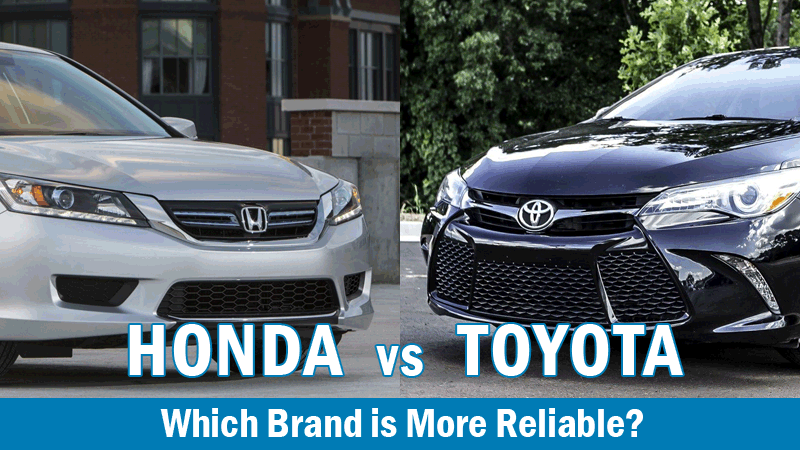
Understanding the reliability of a car often goes beyond cold, hard data like repair costs. Real-world owner experiences paint a vivid picture of long-term satisfaction and potential headaches. By analyzing user reviews and testimonials, we can gain valuable insights into the day-to-day realities of owning a Mitsubishi, Toyota, and Honda vehicle.
Online forums and owner groups offer a treasure trove of information, providing a less filtered perspective than official manufacturer data. This analysis dives into the frequency of reported issues, common complaints, and owner satisfaction scores across these three brands, offering a more holistic view of their reliability.
Reported Problem Frequency
Numerous online platforms host discussions dedicated to specific car models and brands. By analyzing posts across various forums, a clear trend emerges. While Toyota and Honda consistently report lower frequencies of significant mechanical issues, Mitsubishi owners report a higher incidence of problems, particularly concerning electrical systems and transmission components in certain model years. However, it’s crucial to remember that the severity of these problems varies, and not all reported issues are major.
The volume of reported issues, however, suggests a potential difference in overall reliability.
Common Complaints
Toyota owners frequently mention minor issues like squeaks and rattles, which, while annoying, are generally not major mechanical problems. Honda owners echo similar sentiments, with additional reports focusing on paint quality and infotainment system glitches in some models. In contrast, Mitsubishi owners report a wider range of issues, including more frequent instances of electrical system malfunctions, transmission problems (especially in certain CVT models), and instances of premature wear and tear on various components.
The reliability debate between Mitsubishi, Toyota, and Honda is ongoing, with some arguing Mitsubishi lags behind its rivals. Understanding common issues is key to forming your own opinion, and for Pajero owners, checking out this resource on Common Mitsubishi Pajero issues and their fixes is a great starting point. Ultimately, individual experiences heavily influence perceptions of brand reliability, so do your research before deciding.
These are not universal across all Mitsubishi models or years, but they appear more frequently in owner forums than comparable issues for Toyota and Honda.
Owner Satisfaction Scores
Independent surveys and automotive review websites regularly collect owner satisfaction data. While specific scores fluctuate year to year and by model, consistent trends emerge. Toyota and Honda consistently rank highly in owner satisfaction surveys, reflecting generally positive experiences with reliability and longevity. Mitsubishi, while improving in recent years, generally lags behind Toyota and Honda in these rankings, reflecting the higher frequency of reported issues and potentially lower overall satisfaction among owners.
This difference is not insurmountable, and Mitsubishi’s scores have been trending upward, suggesting improvements in quality control and design.
Technological Advancements and Reliability: Are Mitsubishi Cars Reliable Compared To Toyota And Honda?
The integration of advanced technologies significantly impacts the reliability of modern vehicles. While features like hybrid systems and advanced driver-assistance systems (ADAS) offer enhanced performance and safety, they also introduce potential points of failure and increased complexity in repairs. This section examines how technological advancements influence the long-term reliability of Mitsubishi vehicles compared to Toyota and Honda, considering warranty coverage and roadside assistance as key indicators of manufacturer confidence.Technological features vary considerably across Mitsubishi, Toyota, and Honda.
Toyota and Honda have generally prioritized proven, reliable technology, focusing on gradual improvements to established systems. Mitsubishi, while incorporating similar features, has sometimes adopted newer technologies more rapidly, potentially leading to both greater innovation and a higher risk of early issues. For example, while all three brands offer hybrid models, the specific technologies employed and their integration into the overall vehicle architecture differ, influencing potential long-term reliability.
Similarly, ADAS features, such as lane-keeping assist and adaptive cruise control, are common across all three, but the sophistication and robustness of these systems can vary, impacting their long-term reliability and maintenance requirements.
Impact of Advanced Technologies on Long-Term Reliability
Advanced technologies, while offering benefits, can increase the complexity of a vehicle, leading to more potential points of failure. Hybrid systems, for instance, introduce additional components like batteries and electric motors, which have their own lifespan and potential for malfunction. Similarly, ADAS relies on numerous sensors, cameras, and software components that can be susceptible to damage, malfunction, or require costly repairs.
The long-term reliability of these systems depends heavily on the quality of components, software updates, and the robustness of their design. A well-designed and thoroughly tested system, like those typically found in Toyota and Honda, will generally offer better long-term reliability compared to a less mature system from a manufacturer that is quicker to adopt new technologies.
Warranty Coverage and Roadside Assistance
Warranty coverage and roadside assistance programs reflect a manufacturer’s confidence in the reliability of its vehicles. A comprehensive warranty suggests a higher degree of confidence in the vehicle’s longevity and a willingness to address potential issues. Toyota, Honda, and Mitsubishi each offer varying warranty terms and roadside assistance packages, which differ based on the specific model and region.
Direct comparison requires checking the most current information from each manufacturer’s website. However, a general observation is that Toyota and Honda often provide more extensive warranties, reflecting their reputation for reliability.
Warranty Comparison Table
| Brand | Warranty Type | Duration | Coverage Details |
|---|---|---|---|
| Toyota | Basic Warranty | 3 years/36,000 miles | Covers most components against defects in materials and workmanship. |
| Toyota | Powertrain Warranty | 5 years/60,000 miles | Covers engine, transmission, and drivetrain components. |
| Honda | Basic Warranty | 3 years/36,000 miles | Covers most components against defects in materials and workmanship. |
| Honda | Powertrain Warranty | 5 years/60,000 miles | Covers engine, transmission, and drivetrain components. |
| Mitsubishi | Basic Warranty | 5 years/60,000 miles | Covers most components against defects in materials and workmanship. |
| Mitsubishi | Powertrain Warranty | 10 years/100,000 miles | Covers engine, transmission, and drivetrain components. Specific details vary by model and region. |
Specific Model Comparisons
Choosing between Mitsubishi, Toyota, and Honda often comes down to individual model comparisons. While brand reputation plays a role, the reliability of a specific car depends heavily on its design, build year, and maintenance history. Let’s delve into some direct model-to-model comparisons to illustrate the nuances.
Mitsubishi Outlander vs. Toyota RAV4 vs. Honda CR-V, Are Mitsubishi cars reliable compared to Toyota and Honda?
These three models represent popular compact SUVs, frequently compared in the market. The Outlander, known for its spacious interior, often competes on price, while the RAV4 and CR-V boast strong reputations for reliability and resale value. We’ll examine specific aspects to understand the differences in reliability.
Specifications and Reliability Differences: The Toyota RAV4 and Honda CR-V generally receive higher reliability ratings from organizations like J.D. Power and Consumer Reports. These ratings reflect fewer reported problems across various components. The Mitsubishi Outlander, while offering competitive features, has sometimes faced criticism regarding certain transmission issues in specific model years. The RAV4 and CR-V often demonstrate better long-term durability, particularly with their powertrains.
For example, certain model years of the Outlander CVT transmission have shown a higher incidence of premature wear compared to the generally robust transmissions found in the RAV4 and CR-V.
Reported Issues: Owners of older Outlander models have sometimes reported issues with the continuously variable transmission (CVT), including shuddering and premature failure. While the RAV4 and CR-V are not immune to problems, their reported issues tend to be less frequent and often involve minor components rather than major powertrain failures. For instance, some CR-V owners have reported issues with the infotainment system, while RAV4 owners have occasionally cited minor electrical glitches.
These issues, however, are less commonly reported than the transmission problems associated with some Outlander model years.
Long-Term Ownership Costs: While initial purchase prices might vary, the long-term cost of ownership often favors the Toyota RAV4 and Honda CR-V. Their generally higher reliability translates to lower repair costs over the vehicle’s lifespan. Better fuel economy in the RAV4 and CR-V can also lead to significant savings over several years. While the Outlander offers competitive fuel economy in certain models, the potential for costly transmission repairs can significantly impact the overall long-term ownership cost.
Mitsubishi Lancer vs. Toyota Corolla vs. Honda Civic
This comparison focuses on compact sedans, known for their fuel efficiency and affordability. The Corolla and Civic are legendary for their reliability, often cited as benchmarks in the segment. The Lancer, while offering a sporty feel in some trims, has had a more varied reliability record.
Specifications and Reliability Differences: The Toyota Corolla and Honda Civic consistently rank high in reliability surveys. Their engines and transmissions are known for their durability and longevity. The Mitsubishi Lancer, while generally reliable, has faced some criticism regarding specific components in certain model years. The consistent performance of the Corolla and Civic’s powertrains often translates to longer intervals between major repairs.
Reported Issues: Some Lancer owners have reported issues with electrical systems and suspension components, particularly in older models. The Corolla and Civic, while not without flaws, have generally shown fewer reported problems in these areas. Again, the issues reported for the Corolla and Civic tend to be less severe and more easily addressed than the problems experienced by some Lancer owners.
Long-Term Ownership Costs: The Corolla and Civic’s superior reliability contributes to lower long-term ownership costs. Their reputation for fuel efficiency, coupled with infrequent repairs, significantly reduces the overall expense compared to the Lancer, where potential repairs might outweigh the initial cost savings.
